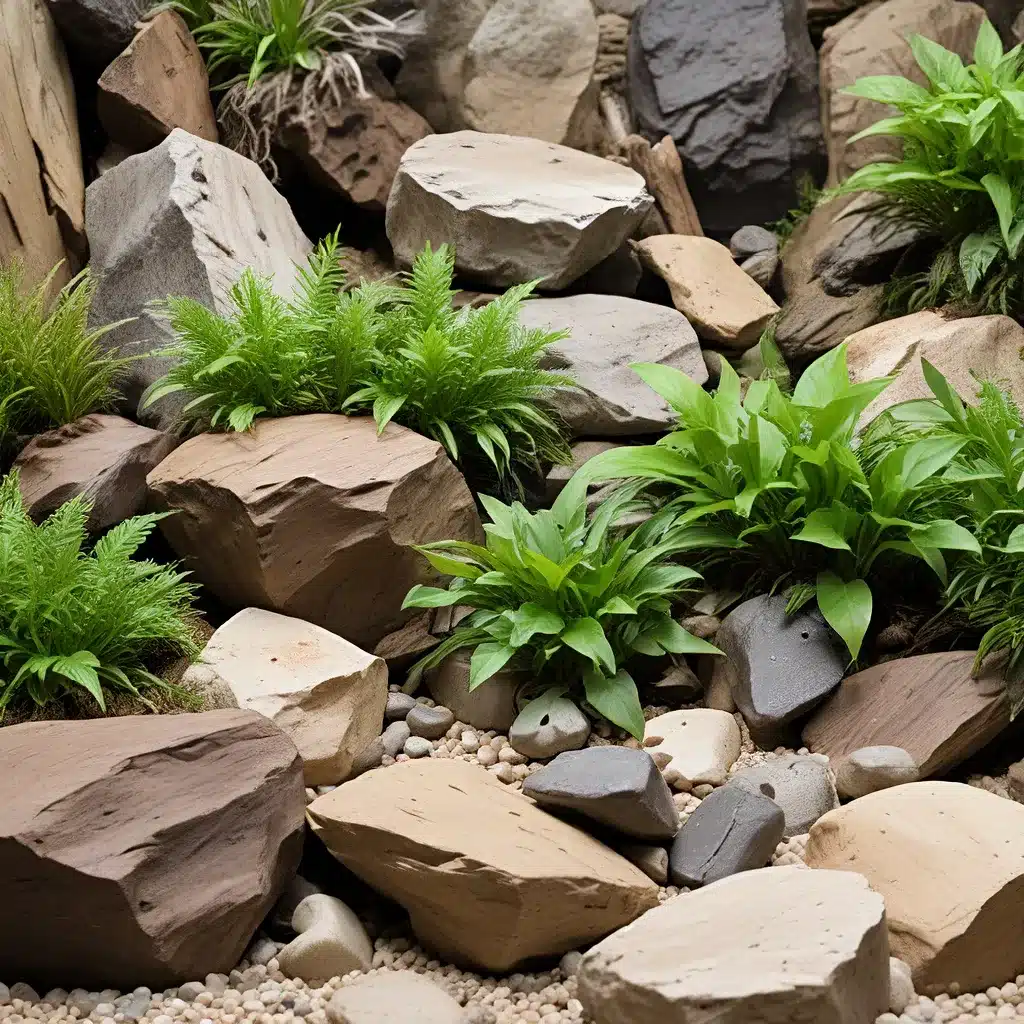
Crafting a Captivating Aquascape with Natural Elements
Aquarium enthusiasts know that the true beauty of a thriving underwater ecosystem lies not just in the vibrant plants and schools of fish, but also in the carefully curated hardscape that serves as the foundation. Integrating natural elements like rocks, driftwood, and decorative accents can transform a simple tank into a captivating work of aquatic art. In this comprehensive guide, we’ll explore the art of aquarium plant hardscaping, offering practical tips and inspiring ideas to help you create a visually stunning and biologically balanced aquascape.
Selecting the Right Hardscape Materials
When it comes to aquarium hardscaping, the options are vast and varied. From rugged river rocks to smooth, sculpted driftwood, each material brings its own unique aesthetic and functional properties to the tank. The key is to select materials that not only complement the overall design but also support the health and growth of your aquatic plants.
Rocks: Rocks are a versatile and essential component of any aquascape. They can be used to create towering landscapes, provide hiding spots for fish, and anchor plants in place. When choosing rocks, look for natural, non-toxic varieties such as river rocks, slate, or lava rock. Avoid using limestone or coral, as they can raise the pH and hardness of the water, potentially causing harm to sensitive species.
Driftwood: Driftwood is a beloved element in the aquascaping world, offering a natural, organic aesthetic that can instantly elevate the visual appeal of your tank. When selecting driftwood, opt for pieces that have been properly cured and prepared for aquarium use. Thoroughly cleaning and drying the wood is crucial to ensure it doesn’t release tannins or discolor the water.
Décor and Ornaments: In addition to rocks and wood, you can incorporate other decorative elements into your aquascape, such as carefully selected ceramic or resin ornaments. These can serve as additional focal points, create visual interest, and provide hiding spots for fish. However, it’s essential to choose ornaments that are aquarium-safe and won’t leach harmful chemicals into the water.
Arranging the Hardscape
The way you arrange the hardscape elements in your aquarium can have a significant impact on the overall aesthetic and functionality of the aquascape. Begin by considering the principles of aquascaping design, such as balance, symmetry, and the use of negative space. Experiment with different placements and compositions, keeping in mind the needs of your aquatic plants and the natural flow of the water.
When positioning rocks, try to create a sense of depth and dimension by stacking them or arranging them in a way that suggests a natural, geological formation. Driftwood, on the other hand, can be used to add a sense of movement and organic flow to the aquascape. Consider using it to frame the background or create an intriguing centerpiece.
Remember to leave ample open space for your aquatic plants to thrive, and ensure that the hardscape elements are securely anchored to prevent shifting or disruption during water changes or other maintenance activities.
Integrating Aquatic Plants
Once your hardscape is in place, it’s time to incorporate the living elements of your aquascape – the aquatic plants. King Aquarium offers a wide variety of hardy, aquarium-suitable plants that can be seamlessly integrated into your hardscape.
When selecting plants, consider their growth habits, light requirements, and compatibility with your chosen hardscape materials. Rooted plants, such as Java Fern, Anubias, and Cryptocoryne species, can be attached to rocks or driftwood, creating a natural, overgrown appearance. Floating plants, like Water Lettuce and Dwarf Water Lettuce, can add a touch of whimsy and help oxygenate the water.
When planting, be mindful of the available space and try to create a sense of depth and visual interest by staggering the heights and placements of your plants. Experiment with different arrangements until you achieve a natural, balanced look that complements your hardscape.
Maintaining a Healthy Aquascape
Proper maintenance is key to ensuring the longevity and vibrancy of your aquarium’s hardscape and plant life. Regularly monitor water parameters, perform partial water changes, and prune and trim your plants as needed to encourage healthy growth and prevent overgrowth.
When cleaning your aquarium, be gentle when manipulating the hardscape elements to avoid disrupting the established ecosystem. Avoid using harsh chemicals or scrubbing too vigorously, as this can damage delicate plant roots and disrupt the natural balance of your aquascape.
By incorporating natural hardscape materials, thoughtfully arranging your aquatic elements, and maintaining a healthy environment, you can create a visually stunning and biologically thriving aquarium that will captivate both you and your aquatic inhabitants.
Conclusion: Unlock the Potential of Your Aquarium
Aquarium plant hardscaping is a captivating and rewarding aspect of the aquarium hobby, allowing you to transform a simple tank into a breathtaking underwater oasis. By carefully selecting and arranging natural elements like rocks, driftwood, and aquatic plants, you can craft a harmonious and visually striking aquascape that reflects your personal style and provides a thriving environment for your aquatic friends.
Remember, the key to a successful aquascape lies in understanding the unique needs and growth habits of your chosen plants, as well as maintaining a balanced and healthy water ecosystem. With patience, creativity, and a keen eye for detail, you can unlock the full potential of your aquarium and create a true work of aquatic art.
So, dive in and embark on your aquascaping journey – the possibilities are endless, and the rewards are truly immeasurable.

